About Rendering Styles | ||
| ||
Wireframe
This rendering style shows edges and lines only.
As far as edges are concerned, when displayed in Wireframe mode, they are applied the color of the mesh and not the one of the "edges + mesh" mode. However, the color applied to edges depends on the original edge color:
-
Edge color is black (default color).
For each surface or solid, the visualization algorithm retrieves the color of all the object's faces and looks for the dominant color (i.e. the color that is most used). This dominant color will then be used for the display in Wireframe. For instance, when you display a blue pad with black edges in Wireframe, edges turn blue.
Shading with Edges Wireframe 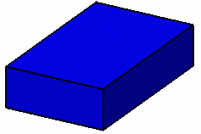
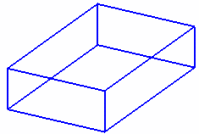
Now if we take a more complex example: a pad with one red face and the rest of the pad in blue. When setting the pad to Wireframe, the pad's edges are displayed in blue which is the dominant color.
- Edge color is other than black.
The color applied to edges is not the dominant color of faces but the color defined in the Color list of the Properties dialog box. For instance, when you display a blue pad with red edges in Wireframe, edges stay red.
Shading with Edges Wireframe 
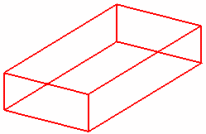
![]()
Shading with Edges
This rendering style displays objects in shading mode with all edges, whatever their type (smooth or hidden).
If you modify the object's color, bear in mind that in Shading mode, lineic elements (such as edges or sketches) do not inherit the new color and turn black as shown in the example below:
| Shading with Edges. Red color is not applied to lineic elements. | Edges and Points. Red color is applied to lineic elements. |
|---|---|
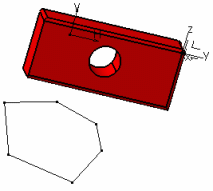 |
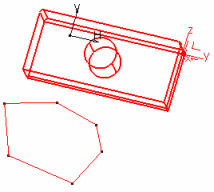 |
For detailed information on color inheritance for Assembly objects, see Graphic Properties.
![]()
Half Visible Smooth Edges
This rendering style displays smooth edges so that they are less visible than sharp edges.
The color applied to edges is the color defined in the part body's graphic properties and, more precisely, it is computed as follows: 50% from the edge color + 50% from the dominant color of the object's faces (the color that is most applied to the faces of an object).
For instance, two pads created in the same solid are considered as one surface and only one dominant color is computed for both pads: changing the color of one of the pads changes the color applied to the smooth edges of the second pad.
In addition to this, selecting Material has no impact on the color applied to edges. The color used is still the one defined in the part body's graphic properties.
![]()
Colored Edges from Faces
This option available in the View Mode Customization dialog box lets you color edges according to the color applied to the object's faces.
For internal edges, if the two adjacent faces have a different color each, the edge is colored according to the color of the face whose bounding sphere's radius is the smallest. The real surface is not taken into account. The bounding sphere of a face is a virtual sphere-shaped bounding volume surrounding the face and whose center and radius are such that the face is completely within the sphere. Depending on the underlying feature, there are two possibilities:
- The bounding sphere of the face is the smallest sphere that includes the face (most current case).
- The bounding sphere is larger than the smallest surrounding sphere.
Example 1: edges between the green and grey faces of the trapezoid turn grey when set to Colored edges from faces because "grey" is the color of the face with the smallest bounding sphere:
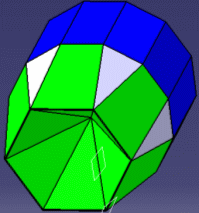 |
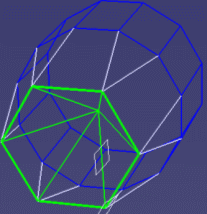 |
Example 2: The small square in the center turns red when set to Colored edges from faces because the bounding sphere of the red face is smaller than the one of the green face:
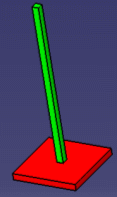 |
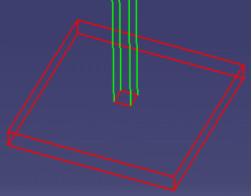 |
Note:
- In V4 models, internal smooth edges are not drawn.
- The amount of memory used is increased to compute the color for each edge in the model.
- It has no effect on .CATPart and .cgr files created earlier than V5R15.